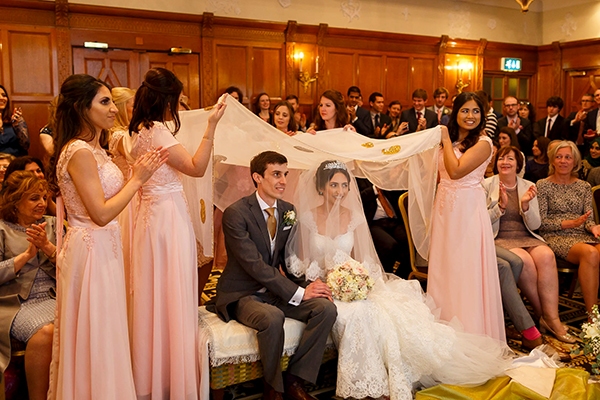From ancient Persia to present day Iran, the celebration of the uniting of man
and woman is described in this unique book. The visually captivating tradition
is carefully presented as a work of art, with ten paintings by internationally renowned artist Nasser Ovissi as well as many pages of photos of the ceremonial wedding setting and its details and symbolism. This beautiful bilingual book is written in its entirety in English and Farsi.
The author, Bijan Moridani, has researched the available information of the past as well as Iran of today. He presents the antiquity and the persistence of the tradition despite a tumultous history, and finally as he writes in his introduction, “in the end it’s love, love and love…”
Here’s a preview of some of the traditions that are fully explained and defined in this wonderful book!
Khastegari (asking for her)
– On a predetermined date, the young man and his family dress up and go to the young woman’s family’s house. They are greeted warmly… The girl enters the room carrying a tray of teacups and offers it to the guests. This is not an easy task. She is nervous and her hands are probably shaking..
Namzad-bazi (engagement flirtations)
– There is no married person who does not remember the exciting, wonderful memories of the period of time in which they are engaged. In a culture where any contact between a man and a woman is strictly limited, even after namzadi (engagement), this episode, which lasts from the night of the engagement to the actual wedding, is treasured. It usually starts with brief visits, most often in the presence of family members, an exchange of loving looks and occasionally, if they are brave and an opportunity presents itself, stealing a kiss, which is always associated with the feeling of anxiety and excitement…
Shirbaha (the value of milk)
– The literal translation is the value of milk given to the bride as a little baby. It symbolizes the hard work and endless effort spent in preparing a little girl for a grown up life. In many English language writings by non-Persian writers or even Persian ones, I have seen this tradition mistaken with “buying the bride” which shows the culturally limited understanding indicated in these writings…
Jaheeziyeh (preparing for an independent life – the dowry)
– Traditionally, the bride’s family prepares almost everything that the couple will need to start their independent life. Jaheeziyeh may include Persian carpets, a refrigerator, furniture, etc. It also indicated the economic capability of the bride’s family…
Stay tuned for more sneak peeks in next month’s issue about the Sofreh-ye Aghd, which is the traditional ceremonial setting.

